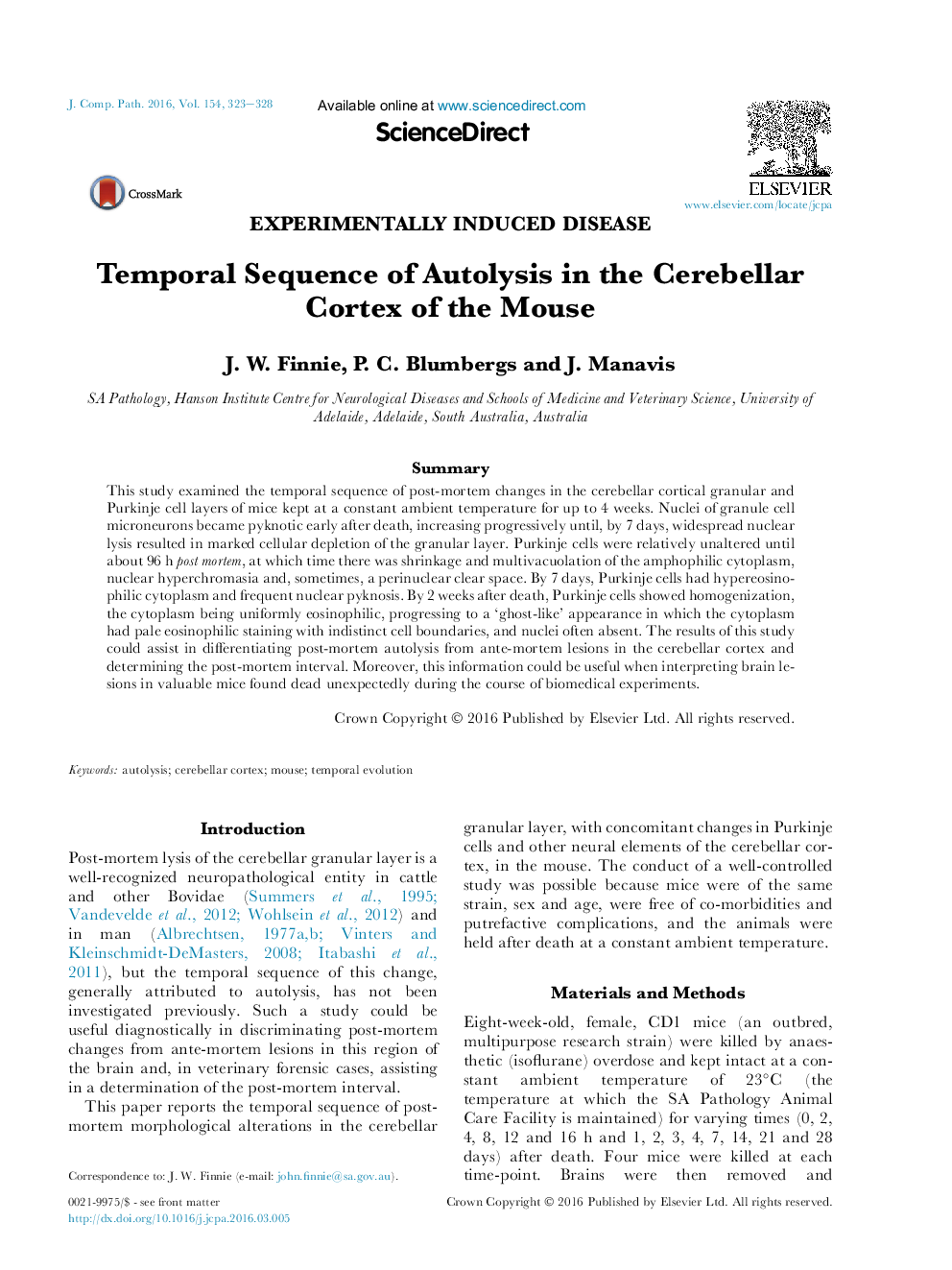| Article ID | Journal | Published Year | Pages | File Type |
|---|---|---|---|---|
| 10972998 | Journal of Comparative Pathology | 2016 | 6 Pages |
Abstract
This study examined the temporal sequence of post-mortem changes in the cerebellar cortical granular and Purkinje cell layers of mice kept at a constant ambient temperature for up to 4 weeks. Nuclei of granule cell microneurons became pyknotic early after death, increasing progressively until, by 7 days, widespread nuclear lysis resulted in marked cellular depletion of the granular layer. Purkinje cells were relatively unaltered until about 96Â h post mortem, at which time there was shrinkage and multivacuolation of the amphophilic cytoplasm, nuclear hyperchromasia and, sometimes, a perinuclear clear space. By 7 days, Purkinje cells had hypereosinophilic cytoplasm and frequent nuclear pyknosis. By 2 weeks after death, Purkinje cells showed homogenization, the cytoplasm being uniformly eosinophilic, progressing to a 'ghost-like' appearance in which the cytoplasm had pale eosinophilic staining with indistinct cell boundaries, and nuclei often absent. The results of this study could assist in differentiating post-mortem autolysis from ante-mortem lesions in the cerebellar cortex and determining the post-mortem interval. Moreover, this information could be useful when interpreting brain lesions in valuable mice found dead unexpectedly during the course of biomedical experiments.
Related Topics
Life Sciences
Agricultural and Biological Sciences
Animal Science and Zoology
Authors
J.W. Finnie, P.C. Blumbergs, J. Manavis,
